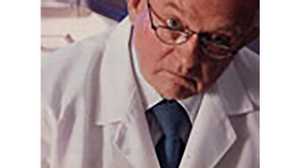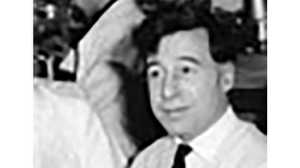The US' First Test Tube Baby

More than eight years had passed since America’s first attempt at a test tube baby. Amid controversy and limitations on federal funding, the United States had languished behind while 14 other children were born in England and Australia using the new technique. That all changed on December 28, 1981, when Doctor Howard Jones stepped into a Norfolk, Virginia, conference room and uttered three magic words: “It’s a girl.”
First Efforts
Since the failed Del-Zio attempt in 1973 at one of New York’s top hospitals, in vitro fertilization (IVF) research had moved to the peripheries of American science, conducted in institutions outside the medical mainstream. One of these was the Eastern Virginia Medical School in Norfolk, Virginia, where two retired doctors from Johns Hopkins, Howard and Georgeanna Jones, opened an IVF clinic in March 1980. The Joneses, who had helped British scientist Robert Edwards conduct IVF back in 1965, had watched as Edwards’s work progressed. He brought the first test tube baby, Louise Brown, into the world in 1978. The Joneses wanted to match his success, and so they followed Edwards’ suggestions as to how to proceed, avoiding putting patients on fertility drugs and conducting implantation of the fertilized eggs into patients only at night. For the first year, nothing worked. The techniques were so new and untested that no one was really sure of the ideal process. Then Georgeanna Jones decided that they would need to follow their own protocol and start using fertility drugs to help stimulate egg production after all.
Who Were the Carrs?
They were a young couple desperate to have children, so when fertility doctors Howard and Georgeanna Jones said they could help, the Carrs jumped at the chance. Only later did Judy and Roger discover they were also becoming pioneers.
Stricken With Infertility
Judy and Roger Carr met at the University of Maine and married in 1973. Judy, who was majoring in child development, and Roger, who came from a large family, both wanted children, and as soon as she graduated, they started trying. Judy became pregnant right away, but suffered from an ectopic pregnancy, where the embryo begins to grow in the fallopian tubes rather than the uterus. The condition requires surgery and can be life threatening; in Judy’s case, her doctor estimated that internal bleeding had left her about ten minutes from death. The surgery also involved the removal of the affected fallopian tube, leaving her with a single healthy one. Judy and Roger tried again, but a second ectopic pregnancy cost her part of the remaining tube, and a third resulted in another ambulance ride and more emergency surgery. “I have good news and bad news,” the doctor told Judy. “The good news is, you’re alive. But the bad news is, you will never have children.”
New Hope in Norfolk
Ironically, the very thing that prompted the doctor’s statement — the removal of Judy Carr’s last fallopian tube — also made her a good candidate for the emerging field of in vitro fertilization (IVF), since she could no longer conceive naturally. The Carrs had heard about Louise Brown, the world’s first test tube baby, but they didn’t connect her birth circumstances with their own situation. In Judy’s words, it “wasn’t even a blip on the radar screen.” Furthermore, IVFhad never been successfully attempted in the U.S. — and was in fact illegal in Massachusetts, where they had settled. While recovering from her surgery, Judy was given a pamphlet about a new clinic formed in Norfolk, Virginia, by retired Johns Hopkins doctors Howard and Georgeanna Jones. The pamphlet didn’t give many details, but Judy and Roger were willing to try, so she got her doctor to write a recommendation and then one day received a phone call at the school where she taught fifth grade. “How soon can you be in Norfolk?” the voice said
The First Pregnancy
From the opening of their clinic, the Joneses had been besieged by applicants wanting to have children. Judy Carr was considered a good candidate because her fallopian tubes had been removed, so there was no possibility of her getting pregnant the old-fashioned way. She was also young, in her late 20s, and thought to have a better chance of becoming pregnant. In March 1981, Judy started taking the fertility drug Pergonal, which required her to drive 20 minutes to a hospital three times a day for the injections. After three weeks of this, Judy flew to Norfolk, where she had some eggs surgically removed. To everyone’s surprise, they started growing very rapidly, forcing a quick trip from her husband down to Norfolk to provide the sperm. On April 17, Judy’s 28th birthday, a fertilized egg was implanted in her uterus as clinic staffers sang “Happy Birthday.” A few weeks later, Judy took a test that confirmed she was pregnant with America’s first test tube baby.
The First Birth
Fearful of too much publicity and aware that an IVF pregnancy in France had ended in miscarriage, the Joneses decided to keep Judy’s identity under wraps. Howard gave a press conference announcing the pregnancy but stating that personal details would be kept secret. Meanwhile, Judy, who remained in Norfolk for the last month of her pregnancy, stayed in a condominium under an assumed name. The Carrs decided to share the news with only close family and friends. Judy believed her child would be healthy, but she was acutely aware that any problems would “certainly set back the future of IVF in the United States.” So she and Roger did what they could to avoid publicity. The planning worked, and the media never got wind of her identity. But the Joneses had other things to worry about. Ultrasounds revealed that the baby’s head was quite small, a possible sign of birth defects. And Howard knew that if America’s first test tube baby had problems, that would give ammunition to the many critics who considered IVF unnatural and immoral — it might even halt IVF in the U.S. So he prayed that the baby would be okay, scheduled delivery by Caesarian section for the morning of December 28, 1981, and wrote out a press release listing what he would say if something went wrong. Fortunately, that press release remained in Howard’s pocket. Elizabeth Jordan Carr was born at 7:46am; “a wonderful baby,” her neonatologist gushed at the initial news conference. “There was clapping and cheering in the room,” Judy remembered, “and a lot of tears.” Roger had “such a feeling of relief, such a feeling of joy, that the journey had finally ended. We’d finally been blessed.” America’s first test tube child grew up happy and healthy.







